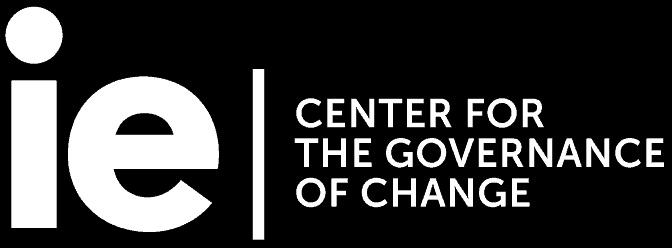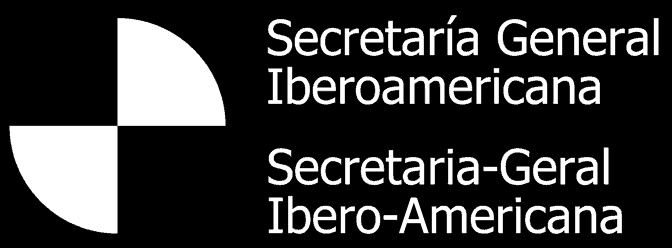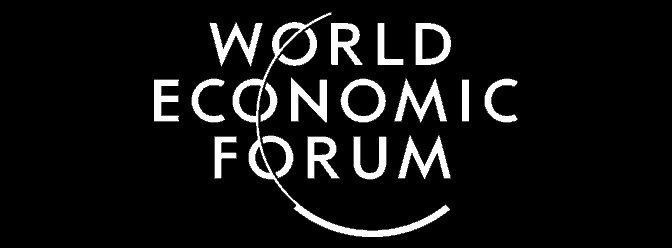
Call For Papers The Fourth Sector Program
- Home
- News And Events
- Events
- Call For Papers The Fourth Sector Program
SUMMARY
The Center of the Governance of Change (CGC) at IE University is seeking contributions from established or promising younger researchers for its incoming report on The Rise of the Fourth Sector in Ibero-America.
This report is part of a broader international project supported by the Ibero-American General Secretariat (SEGIB), the United Nations Development Programme for Latin America (UNDP), and the World Economic Forum (WEF), that seeks to facilitate the creation of a more prosperous, socially fair and environmentally sustainable economy by advancing the development of a new regulatory ecosystem for benefit-driven enterprises.
Each contribution will be compensated with a $4,000 USD honorarium (withholding tax may apply depending of the researcher’s country), and it is compatible with other fellowships and academic/non-academic appointments.



DETAILS
If you would like to attend the event, please sign up!
The fourth sector
Research Project
Application details
Framework
Contact
Over the past two decades, the boundaries between the public, private, and non-profit sectors have been blurring as many pioneering organizations have started to blend social and environmental aims with business approaches. These ‘hybrid’ organizations come in a wide variety of forms (B Corporations, Social and Sustainable Enterprises, Civic Ventures, Cooperatives, etc.), but they all share the purpose of achieving financial success while minimizing the negative externalities and delivering strong social and environmental benefits. This business model makes these enterprises one of the best ways that today’s society has to achieve the Sustainable Development Goals (SDGs) by 2030 and solve some of the most pressing challenges of our time.
Nevertheless, this transformation will not happen without support. In order to thrive and succeed, for-benefit enterprises are going to need a new and cohesive supportive ecosystem that adapts to their unique characteristics and helps them scale without making compromises that dilute their original values and impact objectives. This is what we call the Fourth Sector, a new economic and regulatory space at the intersection of the three traditional sectors –public, private and non-profit. (See ‘Theoretical framework’ for more details).
Creating the Fourth Sector will be a highly challenging, long-term, global endeavor that will comprise a number of tasks –from transforming the business culture to creating new financial and regulatory frameworks. Our project seeks to facilitate this process by examining the regulatory barriers that currently constrain these initiatives, identifying policies implemented to support them, and determining how the rise of the Fourth Sector could help Ibero-American countries to achieve the SDGs by 2030.
Specifically, we are seeking research papers (4,000 – 5,000 words, in English, Spanish or Portuguese) addressing the Fourth Sector in one of the following countries:
- Argentina
- Brazil
- Chile
- Colombia
- Mexico
- Portugal
- Spain
Each paper should provide:
1. A comprehensive overview of the current situation of the Fourth Sector in the selected country. Issues to be considered could include:
- % of national GDP corresponding to the 4S.
- % of national companies that belong to the 4S.
- % of national population employed by 4S companies.
- breakdown of 4S companies by industries/sectors.
2. An analysis of the Policy Tools (laws, fiscal incentives, innovation programs, and so on) currently in place to support the Fourth Sector development, with data and reflections on their results, strengths and weaknesses.
3. An examination of trajectories of the Fourth Sector in the economy, business fabric, and policy agenda of the country (trends of growth and forecasts).
4. A study of the potential contributions of 4S companies to the SDGs by 2030 (can be either a general view or focused in specific goals).
These papers are intended to provide a detailed, comprehensive overview of the Fourth Sector in the region, make the case of the importance of supporting it, and provide policy-makers and entrepreneurs with constructive feedback.
The honorarium for each paper would be of $4,000 USD. Withholding tax may apply depending of the researcher’s country.
We are seeking researchers with an established reputation, relevant experience and a solid track record of relevant publications. Proposals submitted by promising young researchers will also be considered on their merits.
Applications will be assessed by a committee composed of experts.
The GCG may decide not to select any paper for the above research topics if, in its opinion, no application of sufficient quality has been submitted.
Selected applicants will be required to summit a high-quality, original research paper of 4,000 – 5,000 words in length, excluding footnotes, which must meet, at the CGC’s discretion, the overall standard expected of papers published in internationally renowned and peer-reviewed academic journals. Papers should be in English, Spanish or Portuguese.
After the submission of the first draft, researchers may be asked to do some changes on the paper.
Once the final paper has been submitted, researchers might be invited to present their work in a CGC event. The CGC will be responsible for their transportation and accommodation in that case.
The honoraria will be paid upon submission of the final paper, and acceptance by the CGC.
Phase 1 – Submission of the Application
Candidates must send their applications by e-mail to cgc.applications@ie.edu, no later than 15 July 2018. Applications must include the candidate’s curriculum vitae and a research proposal (no longer than 1,000 words), consisting of:
- a statement of issues to be addressed and the selected country,
- the proposed methodology,
- an analysis of the originality and significance of the proposed research paper in view of the existing academic literature,
- a discussion of the feasibility for completion of the research project by October 2018.
Applications may be also submitted by research groups, comprising a maximum of three scholars.
The CGC will notify selected candidates (research fellows) of the acceptance of their proposal by 25 July 2018.
Phase 2 – Submission of the first draft
Each fellow must submit a first draft of his/her research paper to the CGC by 1 October 2018, and must immediately inform the CGC if there is a risk of not meeting that deadline.
Phase 3 – Submission of the second draft (if needed)
The CGC will review the drafts and, when necessary or appropriate, ask the fellows to do some changes and corrections.
The fellows will take those remarks into consideration and complete the final version of his/her research paper by 15 October 2018.
Phase 4 – Completion of the final draft and publication
Research papers would be published as chapters in the incoming The Rise of the Fourth Sector in Ibero-America Report, edited by the Ibero-American General Secretariat, the United Nations Development Programme for Latin America, and IE’s Center for the Governance of Change. The report is to be released by November 2018 and presented at the next Ibero-American Summit of Heads of State and Government. It be distributed in printed and online versions (open access).
Phase 5 – Presentation of the research proposal
Some fellows will be invited to present the Report and their contributions in seminars and press conferences in different countries of the region, and to participate in high-level meetings with key policy-makers and business representatives.
The boundaries of the Fourth Sector can be defined by identifying the minimum set of characteristics that are common to all for-benefit (fourth sector) organizations and, when taken together, differentiate them from nonprofit, for-profit and public sector organizations.
A for-benefit organization is organized and operated to both: Generate one or more social or environmental benefits as its primary purpose; AND generate its revenue primarily through the sale or exchange of goods or services in the marketplace.
It is important to emphasize that these characteristics alone may not be sufficient for a given for-benefit to satisfy the expectations of the public or its stakeholders for any special considerations or support. Rather, they simply articulate the boundary for a population of organizations that cannot easily be accommodated within a conventional three-sector framework.
Phrase-by-Phrase Explanation
The language used in this definition is meant to be understandable without reference to a specialized dictionary, i.e., it is meant to be interpreted as plain language. It is, however, intended to be precise enough to be used as a reference by policymakers and attorneys. The following explains each phrase to help clarify any remaining ambiguities:
A for-benefit organization…
The term “for-benefit” describes all organizations in the emerging fourth sector. The definition does not preclude organizations formed under any current legal construct, and is meant to be neutral with regard to corporate form. The law has not yet caught up with the changing organizational landscape. Therefore, nearly all for-benefits are currently organized under statutes of the other sectors. Thus, organizations structured legally as for-profits or nonprofits under current law can be for-benefits, too.
…organized and operated…
For-benefits make – and demonstrate – a strong commitment to run the organization within the defined fourth sector boundaries. The definition does not require that the organization has added formal statements to this effect in its governing instruments or has a systematic process for demonstrating its social, environmental or financial performance. However, taking such steps is likely to be considered best practice, and may be required before receiving financing from some sources or before receiving government recognition.
…both…
Meeting one or the other criterion is not sufficient; and ideally they should be well integrated.
…Generate one or more social or environmental benefit(s)… / …Generate its revenue…
Both monetary and nonmonetary value is created as a result of the organization’s operation.
…benefits…
This term may refer to: 1) “a positive effect or reduction of negative effects” to people, communities or the environment (which is subjective in many cases); 2) Any amenity valued by an individual or group (or parallel constructs in the natural or ecological realms), or a beneficial change in a system of which they are a part; or 3) A beneficial change in a system in which a group of beneficiaries participates or by which they are affected.
However, as above, specific financing sources or government bodies are likely to accept only a narrower set of target benefits – such as accepting only those social or environmental benefits implied by the list of charitable purposes in the tax code.
…one or more…benefit(s)…
Benefits can either be specific or general, in any combination.
…social…benefit(s)…
First, “social” is intended here to be a counterpoint to “private” or “individual,” that is, a pursuit that benefits others, or the community at large, rather than only a personal interest. A for-benefit would have social benefit as its primary purpose instead of private benefit.
Second, “social” is meant to imply that society recognizes the benefit as having special societal value and significance. The most common examples are those cited in statutes concerning charities, e.g., (1) beneficial effects of an artistic, cultural, economic, educational, literary, medical, religious, scientific or technological nature, among others, and (2) benefits that provide relief to the poor, sick, handicapped, aged, distressed, underprivileged, those facing discrimination or who might face difficulties without the generosity of others. Please note that if an organization is pursuing a social purpose by incorporating a charitable class of individuals or communities into its stakeholder groups (e.g., owners, employees, suppliers, customers, etc.), then it potentially fits here.
What society considers significant is continuously evolving, and there can be honest disagreements within society. So this category is by its nature fairly open-ended.
…environmental… benefit(s)…
Broadly relating to the natural world, both in its relation to human health and happiness, and in its own right.
… or …
The “or” in both statements is intended to have its “and/or” meaning rather than its “either but not both” meaning.
…primary… (and … primarily…)
“Primary” means that it supersedes any other purpose – especially the private interests of owners and investors. It should consistently be the most important, though not the only, consideration in both short-term and long-term decision- making at all levels of the organization, and in all organizational activities.
While a for-benefit that is structured as a nonprofit can accept donations to extend its social impact, it must still be primarily reliant on earned income to be considered for-benefit.
Generate its revenue…
Simply put, a for-benefit primarily generates revenue for its operation through its operations.
…through the sale or exchange of goods or services in the marketplace.
The phrases “sale or exchange” and “goods and services” are meant in their broad economic sense and are intended to include common business practices such as leasing or making investments to generate a financial return.
Counterexamples would include payments from parties other than the direct customer or client, such as donations, formal subsidies, or taxation.
The Defining Characteristics described earlier establish the outer boundaries of the fourth sector. Within those boundaries, there are a broad range of for-benefit organizations (Social Enterprises, B-Corps, Cooperatives, Sustainable Businesses, Triple-impact organizations, New Profit Companies, etc.) that vary from each other depending on a series of Distinguishing Characteristics such us: their Organizational Purpose, Business Model, Impact Model, Legal Model, Impact Assessment & Reporting, and so on. Selected researchers will receive a working taxonomy with precise definitions of these Distinguishing Characteristics and further details.
If you have any questions please, email our programs coordinator, Ms. Sol Fonruge (Sol.Fonruge@ie.edu).

